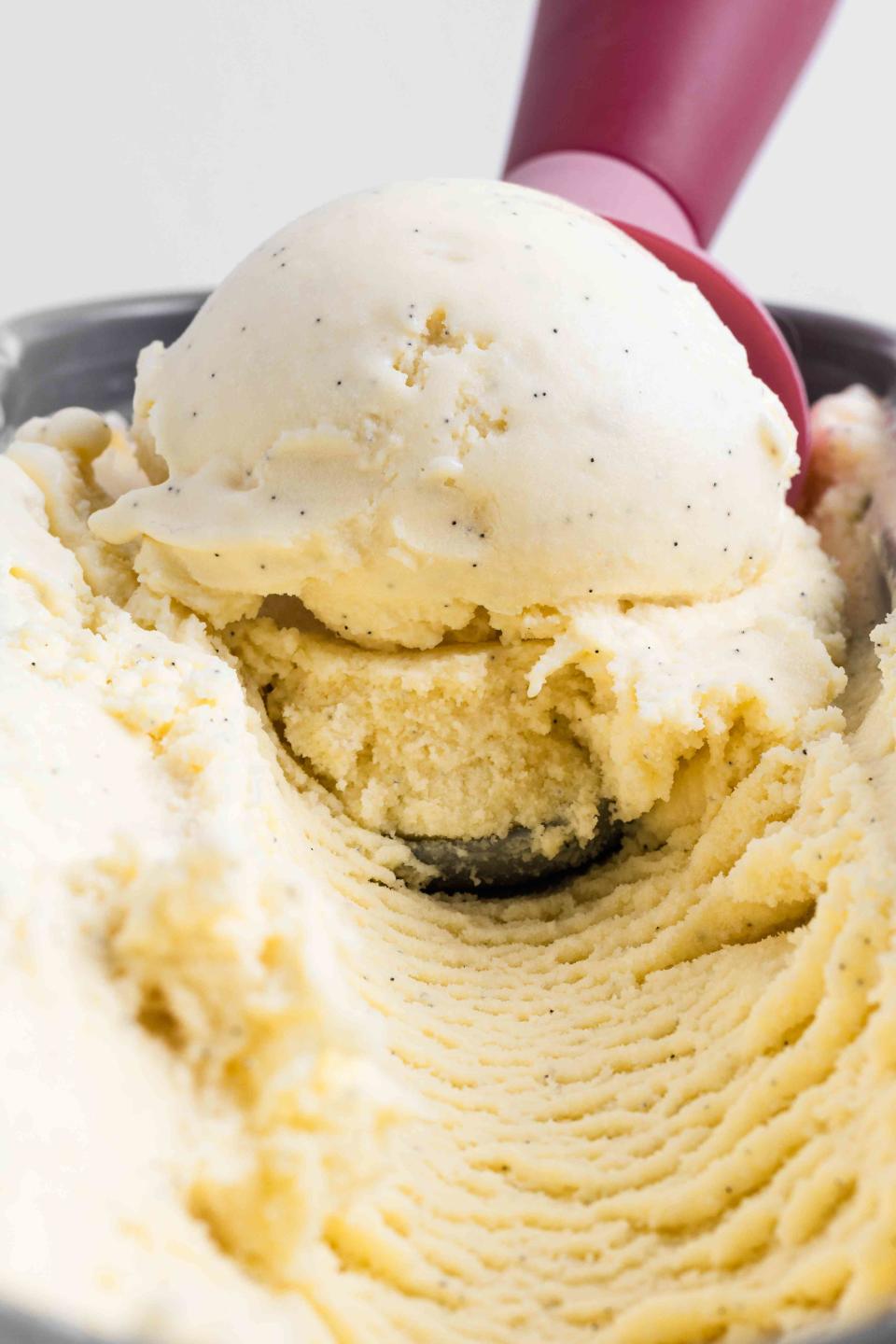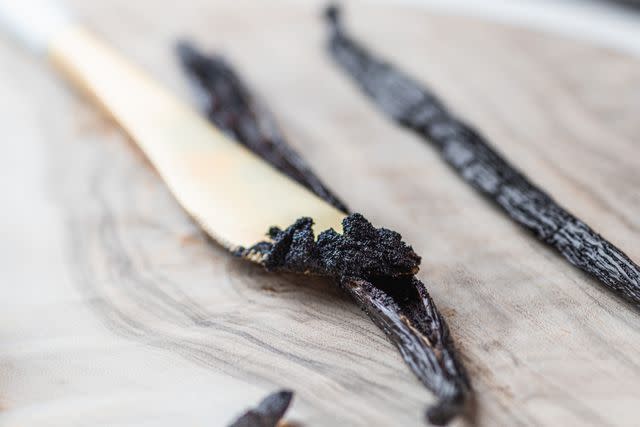French Vanilla vs. Vanilla: A Professional Pastry Chef Explains the Difference
You may be surprised about what makes French vanilla "French." Does it taste different from plain vanilla? A pastry chef weighs in.

When confronted with the choice between vanilla or French vanilla ice cream, I always choose French vanilla. The vanilla option is a bit, well, plain vanilla. At the store, I reach for the carton with the picture of a pristine scoop of light yellow French vanilla ice cream dotted with tiny vanilla seeds. As a professional pastry chef I recognize that those dots—vanilla beans—mean real vanilla flavor, and the custard yellow is the promise of a rich and luscious ice cream.
What’s the Difference Between Vanilla and French Vanilla?
It may surprise you that the difference between vanilla and French vanilla has nothing to do with vanilla beans. (Though French vanilla has the tell-tale flecks of real vanilla.) The difference is in the ice cream base. French vanilla ice cream is made with egg yolks and is closer to a frozen custard (sweetened cream thickened with egg yolks), which makes it a pale-yellow color.
Classic vanilla ice cream does not typically contain egg yolks, focusing more on the bright, fresh cream complemented by vanilla. In the United States, this type of vanilla ice cream without eggs is called Philadelphia-style ice cream, based on where it originated.
When you perceive that French vanilla ice cream is luscious and richer in flavor and color, you’re exactly right—you’re tasting the fat from the egg yolks.
When something is labeled as French vanilla-flavored it means it has a strong caramel vanilla aroma, a deeper flavor, and yellow color. But the term is not specific to just ice cream.
It’s More Than Just Ice Cream
French vanilla has transcended the freezer aisle into adjacent products such as coffee creamers, cake mixes, yogurts, and smoothie blends. Depending on the product, it likely doesn’t mean it contains egg yolks. It means that the flavor isn’t just plain vanilla, but rich, caramelly, creamy, vanilla-flavored.

Where Does Vanilla Really Come From?
At this point, you should be questioning how it could be "French" if vanilla, like coffee and cocoa, only grows in the tropics. The three most common varieties are grown in Madagascar, Tahiti, and Mexico—not France—and each has its unique flavor:
Madagascar: the classic vanilla aroma you imagine when you think of vanilla. It's rich and warm with woody notes.
Tahiti: a lighter, fruity, and floral aroma. Tahitian vanilla has less of the flavor compound vanillin than the other varieties.
Mexico: the birthplace of vanilla. It's bold, spicy, powerful, and smoky.

How French Vanilla Becomes French
There are two possible reasons “French” is associated with vanilla. Madagascar and Tahiti are former French colonies, so France used their colonial power to transport vanilla beans easily and cheaply from farms to flavor desserts domestically. That’s why so many French desserts, from crème brûlée to canelés are flavored with vanilla. Also, France has a high-brow culinary reputation—for many years, diners and chefs worldwide praised French cuisine as the gold standard.
Because of these associations, marketers in the U.S. include the word “French” to evoke an impression that the ice cream is fancier, of higher quality, and more indulgent, even if the product is not ice cream made in the French style or has anything to do with France at all.
Today, French vanilla technically refers to a style—custard thickened with egg yolks—rather than a true variety of vanilla. Pastry chefs and bakers, like me, may have a reputation for precision, but this is one area where we let facts slide. So now, when you see French vanilla custard on the menu, or you have to pick between vanilla or French vanilla ice cream at the grocery store, you’ll know what to expect.

